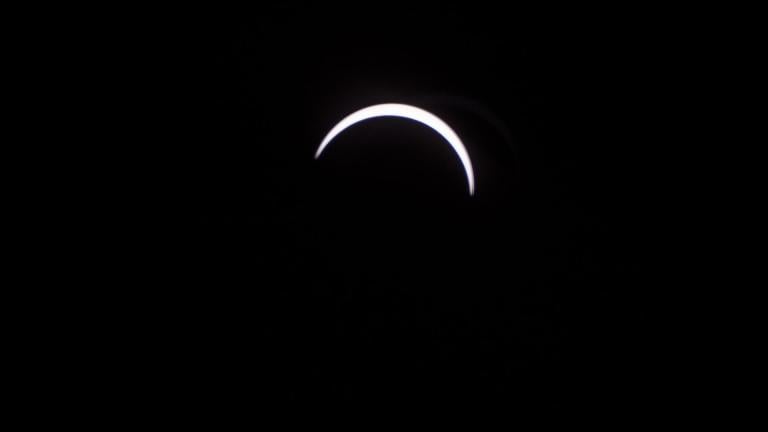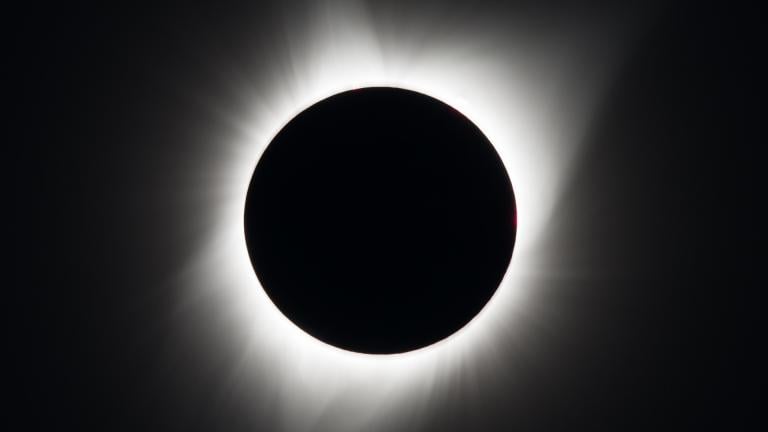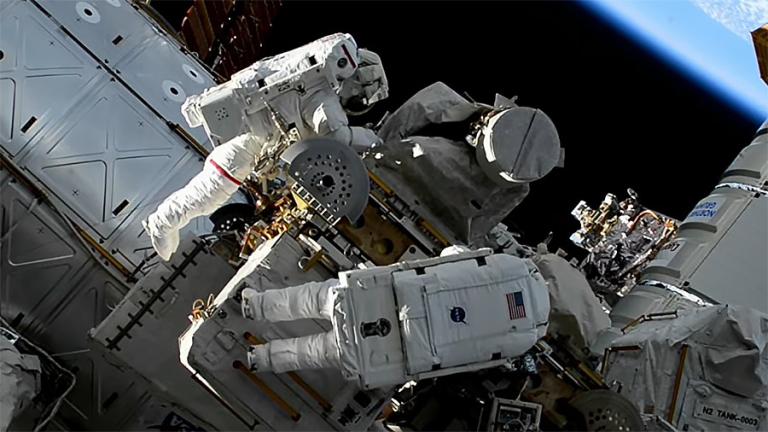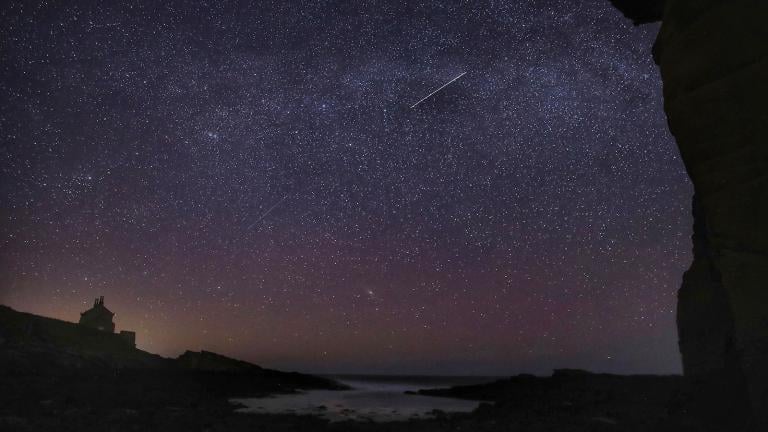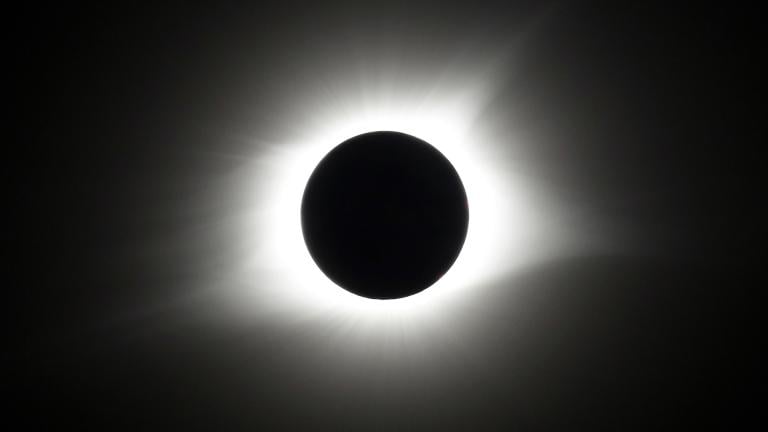If you look to the northern night sky next month, you may see a bright green light — a visitor from the far outer reaches of the solar system. It’s a comet known to the astronomical community as C/2022 E3 and was discovered in March.
According to NASA experts, the comet would last have been seen in the night sky more than 10,000 years ago — millennia before the birth of human civilization — and it may never pass this way again.
Below is a Q&A discussing this rare comet visitation with Mark Hammergren, astronomer and president and CEO of Farther Horizons LLC.
WTTW News: This new comet which will shortly be visible from Earth. It was discovered in March, but tell me how it was discovered and a little bit of what we know about it so far.
Mark Hammergren: The discovery was made pretty much automatically by something called the Zwicky Transient Facility. That's a system and observing telescope and camera that are set up to observe large areas of the sky looking for transient objects: changing objects that most often are things like variable stars. They're particularly going for gamma-ray bursts, which are very distant explosions. Mapping those out and finding out how far away those are shine a light on the large scale structure of the universe. But in addition to finding changing objects in the distant universe, they also look through everything in between, including our own solar system. And so the ZTF has discovered many asteroids and many comets, which moved throughout the inner solar system. So, so it's a fantastic instrument for finding new objects like that.
In terms of this particular comet, there are varying reports as to it last passing by the Earth anywhere from 10,000 years ago to 50,000 years ago — or maybe this is the first time it's ever passed by. As best we can tell, do we have a sense as to what the orbit of this comet is?
Hammergren: The latest orbit determination shows that this comet has a very slightly hyperbolic orbit. That means it is not in a closed orbit around the sun. This may very well be its first pass by the sun and on the way out. In any case, it is never coming back after it goes out.
Is it definitely going to exit the solar system or will it just go on to such a very long elliptical orbit that we're not going to see it again for millennia?
Hammergren: That's still an open question. It all depends on whether it encounters another object and has its orbit shifted ever so slightly to make it come back or get kicked out further.
The comet appears to have a greenish hue to it. Do we know what might cause that?
Hammergren: So most comets that show a pretty strong gas emission coming off, they'll have that same hue to it. And that green comes from emission lines of excited atoms of carbon actually — carbon and hydroxide ion. These all shine very brightly in the blue, some in the ultraviolet, some more in the green. So, yeah, it puts out that nice neon-greenish color.
Do we have a pretty good idea of the composition of comets generally and of this comet in particular? Can we get information from analyzing the outgassing that we can detect?
Hammergren: Yeah, absolutely. We know the general composition of comets very well. We know that they're composed of various frozen gasses, primarily water, which in space would be a gas because it can't be a liquid out there — but also things like carbon dioxide, carbon monoxide, methane and so on. We know the general composition very well, but it's the details of the composition that differ from comet to comet. But that also gives us the best information about the origin of the comets and the origin of our solar system.
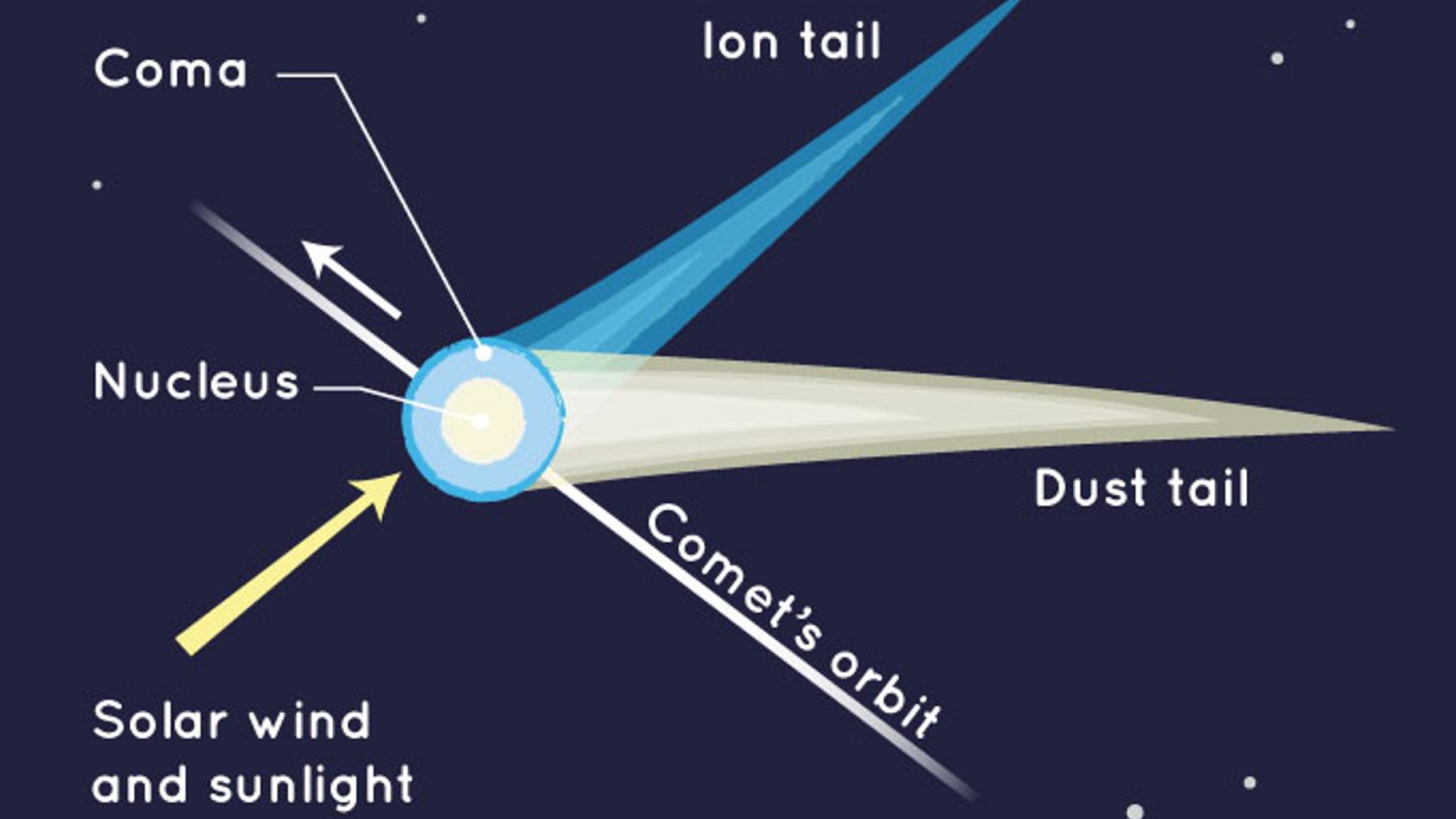 (NASA / JPL-Caltech)
(NASA / JPL-Caltech)
The comet is currently approaching the sun. It will be the closest to the sun in a couple of days and then in early February, it will make its closest pass to Earth. Is that correct?
Hammergren: That's correct. And the best visibility, the brightest should be the end of January, early February.
Will the comet be easily visible with the naked eye or will we have to go to a dark sky location or have binoculars to be to be able to see it?
Hammergren: Comets are always something of a gamble, really, when it comes to observing them. Some people say comments are like cats in that they do what they want and every once in a while, they go through these frantic bursts of activity. But this comment is not likely to be a real showstopper in the nighttime sky. Predictions are that it will be barely visible to the naked eye except from maybe a very dark site.
With a decent set of binoculars, would you be able to see it for sure if you were in the right location and looking in the right direction?
Hammergren: If you have a good pair of large binoculars, you should be able to see it in the nighttime sky as long as you're looking from a dark site. And as time goes on and as the next few weeks go on, it should get brighter and brighter so that even people using optical aids like binoculars or telescopes should be able to see it from their backyards if they know exactly where to point them.
So where in the sky should we be looking for it?
Hammergren: Coming up on the end of January, early February, it'll be best visible in the morning sky before sunrise — well before sunrise, when it's still a very dark sky, and it will be in the northeast to eastern sky rising higher and higher as time goes on. Towards the beginning of February and afterwards, it will also be visible in the evening sky as the comet moves further and further north in the sky. It will be visible pretty much all night long as it circles the north celestial pole.
Do you recall seeing any particularly striking comets in the past?
Hammergren: Yeah, I was in Seattle at the time of both the comet Hale-Bopp and the comet Hyakutake — two really remarkably bright comets that came by in the space of about two years. Both were just gorgeous sights.
This comet is not going to pass closer than 26 million miles from Earth, but could future comets present a threat to the Earth? Our understanding is that comets are potentially more dangerous than asteroids simply because they are coming from further out in the solar system, and we can’t track them as well.
Hammergren: It's an increasingly relative threat. So the threat from comets, the absolute threat is not going up. But as more and more of the asteroids are discovered and their orbits are determined and we eliminate individual asteroids from being a threat, that means that the undiscovered comets pose a larger relative risk.

